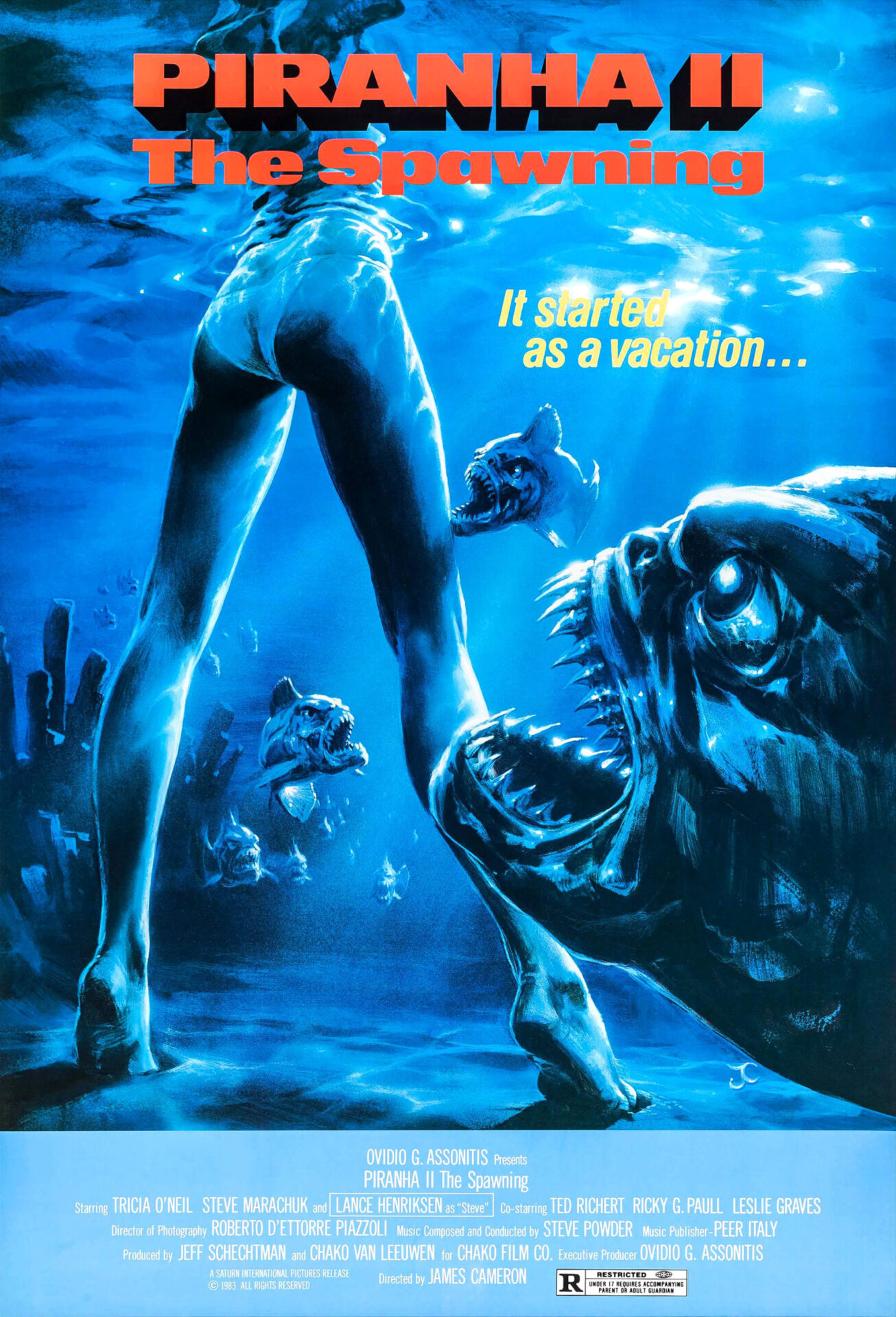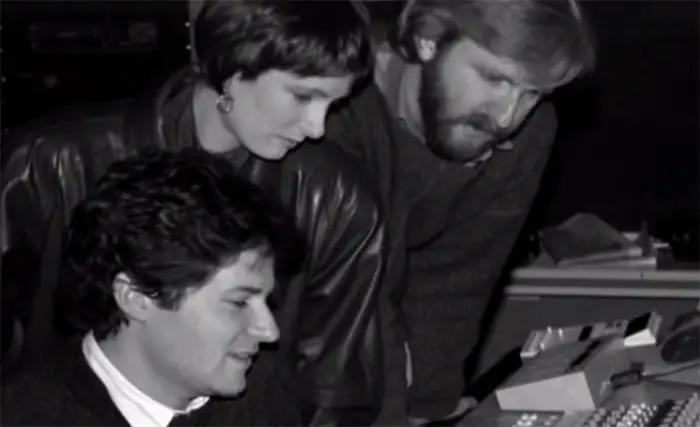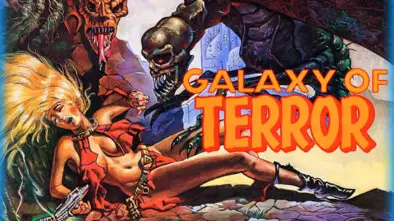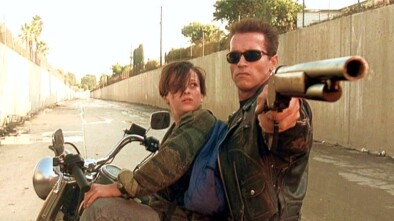How James Cameron’s Big Break Working For Roger Corman Led To ‘The Terminator’
James Cameron’s road to The Terminator involves designing “a mother-ship with breasts,” electrocuting worms, directing a B-movie Jaws rip-off, and meeting his producing partner–and future first wife–Gale Ann Hurd.
How have you imagined your Hollywood break? Did you envisage writing an original screenplay, or directing a groundbreaking short film or even financing your own feature? Often the reality is less inspiring, with many starting with entry-level positions working on someone else’s feature or television project. It’s not always ideal, but it’s a foot in the door, and many famous directors and writers start this way.
Take James Cameron. The guy who directed The Terminator, Aliens, Titanic, and Avatar, got his start working for B-movie director Roger Corman. The book, Crab Monsters, Teenage Cavemen, and Candy Stripe Nurses: Roger Corman, King of the B Movie, details Cameron’s meteoric rise under Corman to directing his own project, The Terminator.
Cameron’s big break into Hollywood was working on Battle Beyond the Stars, Corman’s low-budget rip-off of Star Wars. But Corman’s space film is more a sexual assault of spacecraft shaped like various parts of female anatomy than fighting the Galactic Empire. The film features many of Corman’s trade-mark cheap visual effects, including a worm-infested severed arm, vaginal-shaped docking bays, and “a mother ship with breasts”.
All of these were James Cameron’s ideas, and the fledgling film-maker’s talent saw him rise quickly in Corman’s ranks from visual effects, to art director, and finally second unit director.
Cameron Started in Visual Effects

James Cameron’s “mothership with tits”
The young Cameron prepared for a career in visual effects learning mold-making, sculpting, matte camera, and optical printing on small projects in Orange Country with fellow amateur filmmakers all hoping to break into Hollywood.
When Cameron heard Corman was making Battle Beyond the Stars in Venice, LA, he managed to get a job as a model-maker on the film. Soon, he got his big chance to distinguish himself from the rest of the crew:
“Roger came through one day, and he kind of threw down a challenge to everyone in the model shop. Actually, he was kind of pissed off. We’re so many weeks away from shooting, and no one had even designed the main character ship for Battle Beyond the Stars. The main space ship had a female computer. It was kind of a HAL 9000, but female. He said, ‘I want a design in the next two days.’ So it sort of became a sort of design contest, and I thought, OK, it’s Roger Corman. He does girls-in-bamboo-cages movies. What is he selling? He sells tits! So I designed a kind of Amazon warrior spaceship — basically a spaceship with tits. It was a cool design. Roger came through and he looked at all of the designs, and he stopped at mine and he went: ‘This is it, this is exactly what I want.’ He said, ‘What is this?’ And I said, ‘This is a spaceship with tits.’ And he says, ‘Yes, that’s exactly what it is. You build it.’ So suddenly, I was the guy in the model shop that everyone hated.”
Cameron soon met his future producing partner and wife, Gale Ann Hurd, who as Corman’s assistant, was asked by the director to visit the model-shop and see how the sets were coming along. She discovered that only two of the 25 sets were built. The rest had to be designed and constructed in just four days before shooting commenced. Impressed by Cameron’s design and construction of the mothership, Hurd suggested to Corman that Cameron take of art direction and build all the interior sets.
“And that’s how Jim moved over to run the art department on Battle Beyond the Stars”, Hurd recalled. “Under Roger Corman you could go from being a model builder to art director in twenty-four hours.”
But it wasn’t all smooth sailing. Cameron was fired two or three times by Corman, but was rehired by the team behind the director’s back, because nobody else could build the sets on such a tight schedule.
A DIY-Approach To Set Design
Cameron really cut his film-making teeth on Battle Beyond the Stars. He learned how to work within the confines of a small budget, how to give low-cost effects and set design a relatively high-quality look, and how to deliver the work on time. Cameron developed a do-it-yourself-approach to sets, which he called ‘kluging’. The term referred to combining unrelated items like photo tubes, industrial dishwashing racks, and Winnebago molds to create spaceship interiors. They were then spray-painted and tricked out with set dressing.
“I developed this whole method for cutting foam-core and scoring it on the backside and bending it so it looked like formed metal and spraying it with automotive lacquer and metallic paint. It looked pretty good.”
For one interior, Cameron was influenced by Douglas Trumbull’s work on Silent Running. Trumbull, who made his directorial debut on Silent Running, is also responsible for the amazing model work on Close Encounters of the Third Kind and Blade Runner. Cameron wanted to emulate his “vacu-formed wall modules” of interior sets in Silent Running, but without the appropriate equipment, Cameron opted for a cheaper alternative.
He placed Styrofoam breakfast trays from McDonalds (of varying sizes) in different configurations and then hot-glued them to set walls. Buying them in bulk reduced the cost of the already low-priced set decorations. In addition, time was at a premium. “I had one rule, which was never unplug your glue gun,” Cameron said. “And I used to scream at people about it because they took twenty minutes to heat up, and if you just left it on all night, then you could just quickly glue things together.”
Electrocuting Worms For Corman Leads To First Directing Gig

Cameron’s talent, leadership, and quick working practice on Battle Beyond the Stars led to work on another Corman project, Galaxy of Terror. Cameron worked as production designer on the new film and also convinced Corman to make him Second Unit Director after the film began to slip behind schedule.
“That was my first experience directing. I sort of thought maybe I should think about directing because I keep building these cool sets and these guys keep shooting them like idiots. I knew how it should be done, and I was watching these boneheads, thinking I can do better than this! So yeah, I was looking for an opportunity to direct.”
But he may have spoken too soon, because Corman wanted him to direct a scene where a giant maggot raped a woman. While Cameron didn’t agree with everything Corman did, he said he “wasn’t judgmental about it.” He understood the film was Corman’s, and he was a hired hand. So he went to work. One sequence involved filming mealworms coming out of a fake severed arm. He poured the jar of worms over the arm, but they just lay there inert and lifeless. Thinking quickly, Cameron dowsed the worms in methylcellulose, which has low electrical conductivity. He then split and stripped the ends of a zip cord to lie in the methylcellulose. The other end was plugged into a junction box, which a crew member turned on when Cameron yelled “Action” bringing the worms to life, writhing in the electrified methylcellulose.
Unbeknownst to Cameron was that the producers of Piranha II:The Spawning were watching the whole time. But they just couldn’t figure out how he made those worms writhe on cue. They went away and said, “If he’s that good with worms, I wonder what he can do with actors!” And that’s how he got his first feature film directing gig on Piranha II.
The Road to The Terminator

James Cameron and Gale Anne Hurd met on the set of Roger Corman’s Battle Beyond the Stars. They would form an enduring professional partnership, one which would outlast their marriage. Here they are pictured with the late composer, James Horner on Aliens.
Under Corman, Cameron had been thrust into the deep end learning production design, second unit directing, and gaining experience in visual effects, all which led to becoming a feature film director. More importantly, this experience laid important groundwork for directing The Terminator.
On both Battle Beyond the Stars and Galaxy of Terror, everything fell into place for Cameron. It might read like his stars were aligned, but he proved his success is a combination of guts, talent, and hard work. No less significant was the professional relationship he developed with Gale Anne Hurd, and set painter, and future Hollywood actor, Bill Paxton.
“She was an up-and-coming producer,” Cameron said of Hurd. “She was interested in all of the effects processes, and we just kind of naturally gravitated to each other. At that point, it wasn’t even anything romantic. We were just so focused on our careers, I don’t think that a romantic relationship even occurred to us at that point.”
Their interests aligned on The Terminator. “When Jim and I were initially going to make The Terminator in 1983, Arnold Schwarzenegger became unavailable because Dino De Laurentiis went forward with Conan the Destroyer. So at that point Roger offered me the job of going down to Argentina and overseeing the movies he was making down there. But my heart was in The Terminator.”




